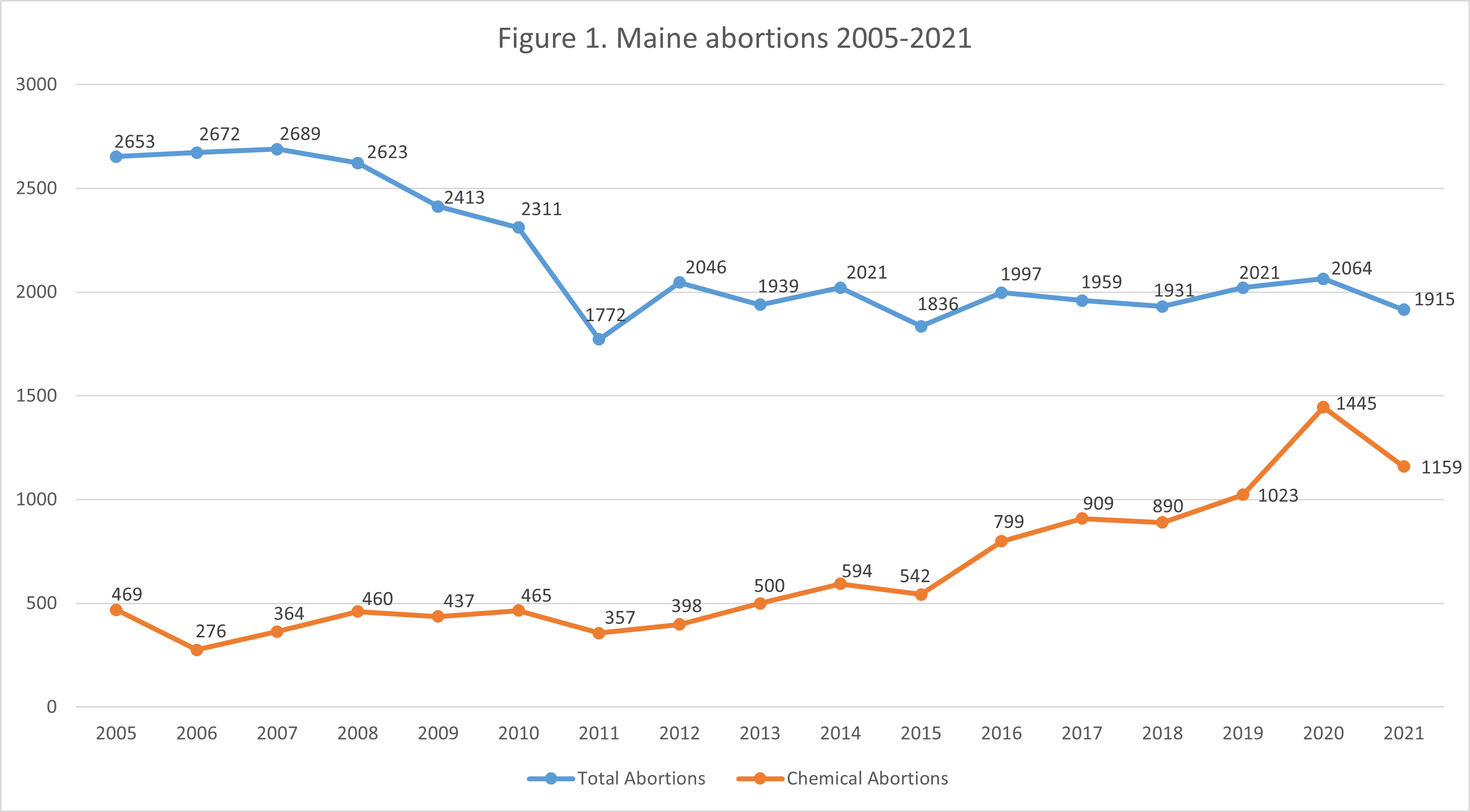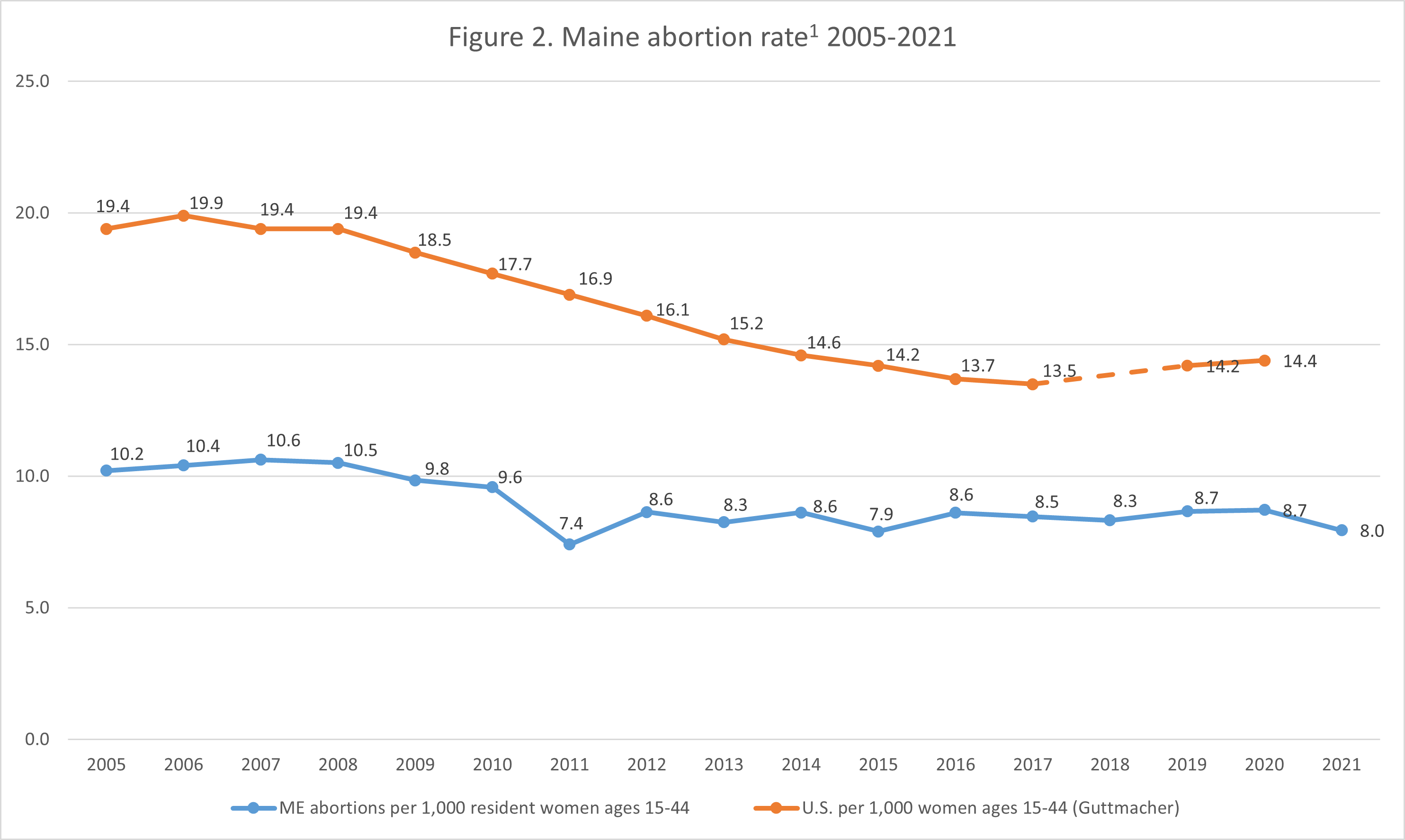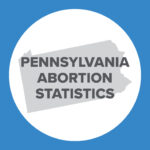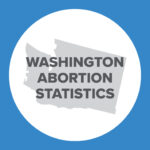Abortion Reporting: Maine (2021)
Maine’s 2021 abortion report was published simultaneously with its 2020 report by the Maine Department of Health and Human Services. This report covers Maine’s most recent data, from 2021. The report indicates that abortions decreased from 2020 to 2021.
Statistics and Changes in Maine Abortions, 2020-2021

The report does not include information on Planned Parenthood’s Maine abortion market share.
Abortion Totals and Trends
There were 1,915 abortions reported in Maine in 2021, down 7.2 percent from the 2,064 reported in 2020 (Fig. 1). Similarly, chemical abortions decreased as well, by 19.8 percent, from 1,445 in 2020 to 1,159 in 2021.The Charlotte Lozier Institute (CLI) estimates that Maine’s abortion rate in 2021 was 8.0 abortions per 1,000 women ages 15 to 44 and decreased from 2020’s abortion rate of 8.7, a decline of 8.8 percent (Fig. 2).
State Report Summary
Ninety-four percent of the abortions reported in Maine in 2021 were performed on Maine residents. Six percent were on nonresidents and under one percent were on women whose residence was not reported. Ten percent of the abortions were performed on girls under the age of 20, including three percent on girls under age 18. Fifty-four percent were on women in their twenties, with 27 percent each on women ages 20 to 24 and 25 to 29. Thirty-two percent of Maine abortions were on women in their thirties, and five percent were on women age 40 or older. The ages of two women who were reported to have obtained abortions were not disclosed.
White women obtained the vast majority of abortions reported in Maine in 2021, accounting for 84 percent of the total. Nine percent of the abortions were on black women, two percent on Native American women, two percent on women of other races, and three percent on women whose race was not reported. Four Hawaiian or Pacific Islander women also were reported to have had abortions in 2021. CLI estimates that Maine’s black abortion rate in 2021 was 31.4 abortions per 1,000 women ages 15 to 44, over four times higher than the white abortion rate of 7.2 abortions per 1,000 women.
Seventy-eight percent of Maine abortions were performed on unmarried women, 16 percent on married women, and seven percent on women of unknown marital status. The majority of the women (64 percent) had no previous abortions, while 22 percent had one prior abortion, and 14 percent had two or more. Just under half (48 percent) of the abortions were on women with no prior live births. Twenty-two percent were on women with one previous live birth and 30 percent were on women with more than one. Just over one-fifth of the women had previously suffered a miscarriage.
In 2021, chemical abortions made up 61 percent of the abortions reported in Maine. Thirty-five percent of the abortions were performed using suction curettage, and four percent were dilation and evacuation procedures. Just one abortion was performed via sharp curettage.
Over 70 percent, 72 percent to be exact, of the abortions were performed earlier than nine weeks of gestation. Sixteen percent were performed between nine and 10 weeks and five percent between 11 and 12 weeks. Another five percent occurred from 13 to 15 weeks, dropping to three percent from 16 to 19 weeks of gestation. Zero abortions were reported at 20 weeks of gestation or later.
Legislative Changes
In July 2022, in response to the United States Supreme Court decision in the case of Dobbs v. Jackson Women’s Health Organization a month prior, Maine Governor Janet Mills (D) signed an executive order titled “An Order Protecting Access to Reproductive Health Care Services in Maine.” This executive order reaffirms Maine’s historical support for abortion, and according to Mills, “makes clear that access to reproductive health care, and the healthcare providers who offer it, will be protected by my administration.” The order:
- Directs state agencies to review and remove all laws and regulations that could be perceived as barriers to “reproductive health care.”
- Prohibits state agencies from cooperating with other states’ investigations into women for receiving or seeking and health care providers for delivering any “reproductive health care services that are legal in this state.”
- Reiterates that the Governor has and will use her authority to decline extradition attempts from other states seeking to enforce pro-life laws.
State Ranking
In 2016 CLI surveyed states’ abortion reporting requirements and found that Maine’s reporting tied for 36th best. Maine could improve its reporting by including data on the payment methods used to fund abortions in the state given that in 2019 the state passed a law requiring that state funds and private insurance cover abortion. Secondly, Maine could require the reporting of complications caused by abortion. Lastly, Maine could include data on the facilities where abortions take place, as other states do.


- Rates were calculated by CLI using population estimates from the United States Census Bureau. The rates were calculated using the following formula: (total number of abortions performed in Maine ÷ number of resident women ages 15-44) x 1,000. Rates may differ slightly from previous CLI articles due to revised population estimates. Estimates for 2005-2009 are intercensal estimates of the July 1 resident population. Estimates for 2010-2019 are Vintage 2020 postcensal estimates of the July 1 resident population. Estimates for 2020-2021 are Vintage 2021 postcensal estimates of the July 1 resident population. Estimates were produced by the U.S. Census Bureau and the National Center for Health Statistics.

























